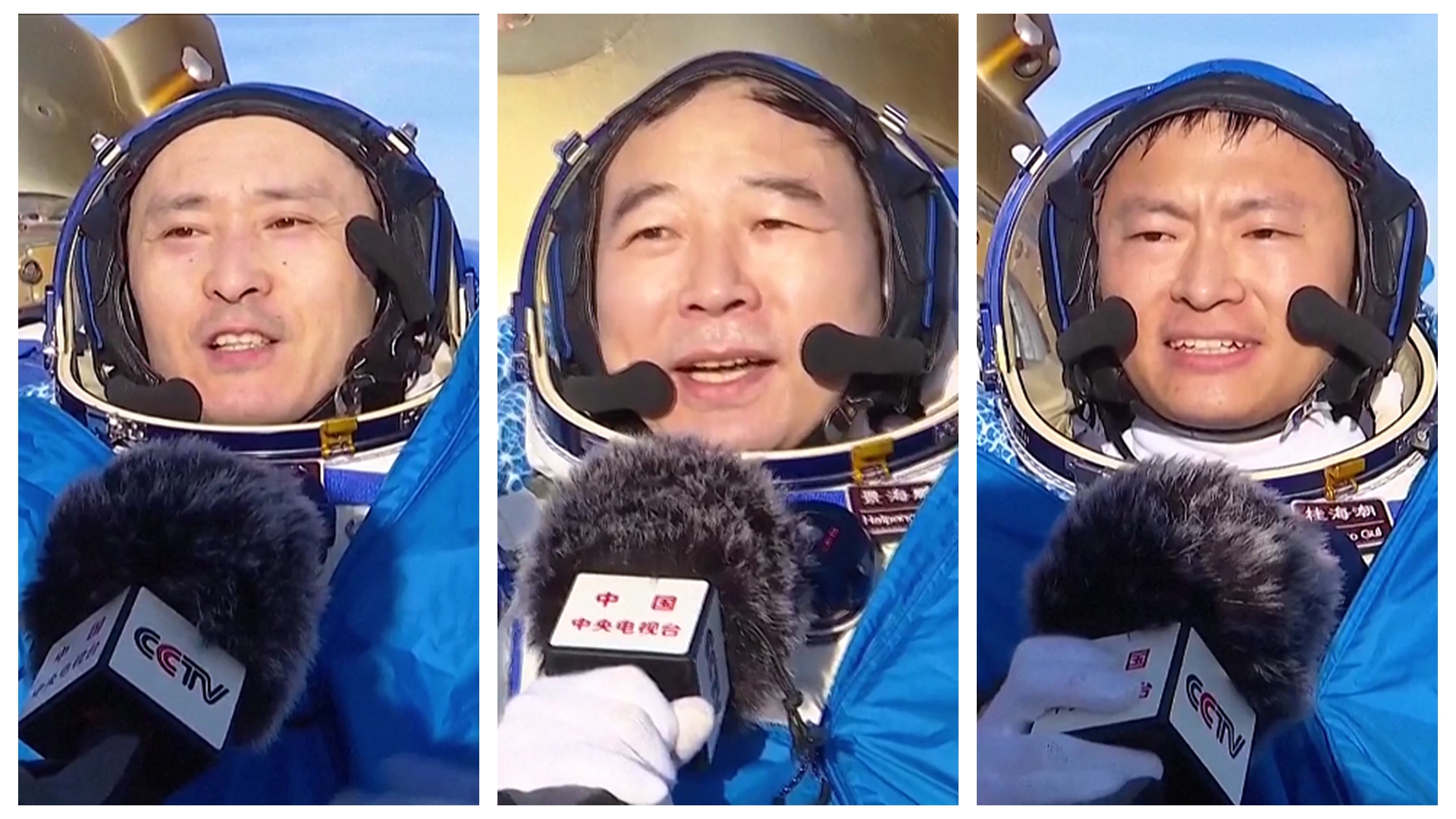
Shenzhou-16 taikonauts Jing Haipeng (C), Zhu Yangzhu (L) and Gui Haichao (R) return to Earth from the China Space Station, October 31, 2023. /CMG
Shenzhou-16 taikonauts Jing Haipeng (C), Zhu Yangzhu (L) and Gui Haichao (R) return to Earth from the China Space Station, October 31, 2023. /CMG
China's Shenzhou-16 astronauts, or taikonauts, returned to Earth safely on Tuesday after a 154-day mission in the country's space station.
00:34
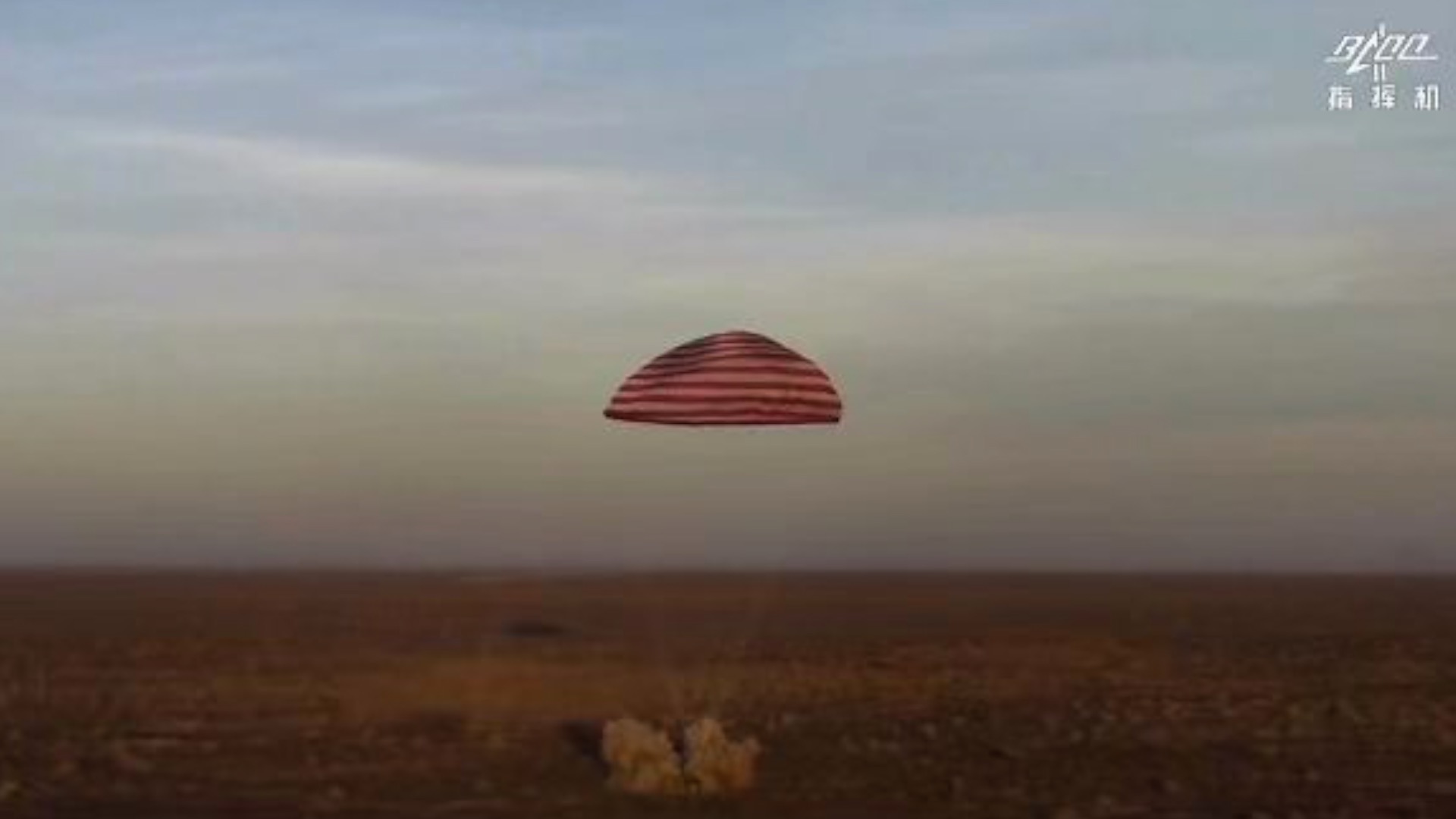
The re-entry capsule with the three taikonauts aboard – Jing Haipeng, Zhu Yangzhu and Gui Haichao – landed at the Dongfeng Landing Site in the Gobi Desert in north China's Inner Mongolia Autonomous Region at 8:11 a.m. Beijing Time, according to the China Manned Space Agency (CMSA).
Click here for CGTN's live broadcast of the event.
The Shenzhou-16 taikonauts are in good health, according to the CMSA.
The agency declared the Shenzhou-16 mission, the first manned mission in the application and development phase of China's space station, a complete success.
03:22
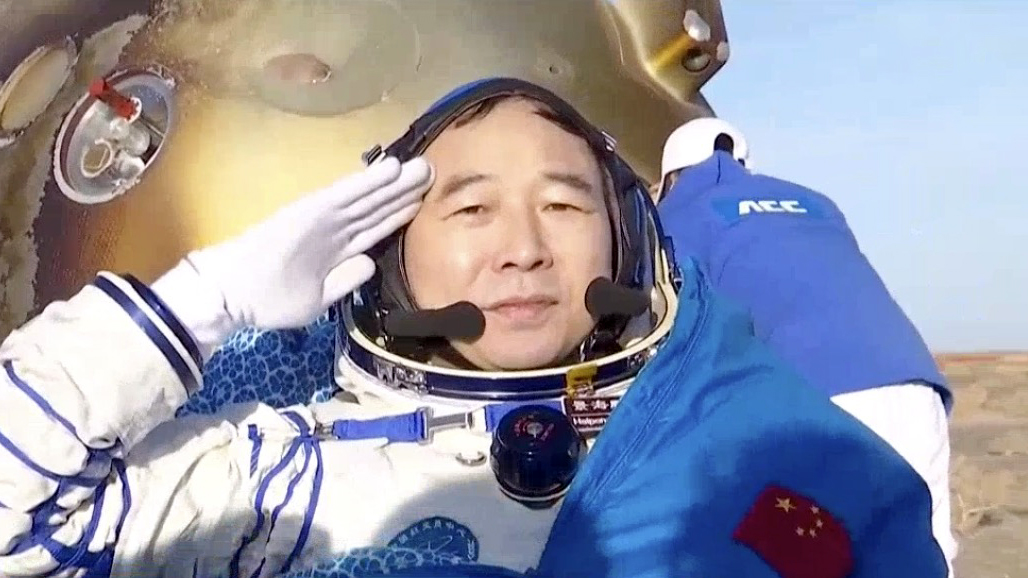
Jing, commander of the mission, was the first to exit the re-entry capsule, successfully completing his fourth space journey. He has visited space more times than any other taikonaut, with a cumulative in-orbit mission time exceeding 200 days.
Jing told China Media Group after he got out the capsule that it was a great trip to the China Space Station.
"We lived happily and worked efficiently during the mission," he said, adding that the crew achieved a "zero mistake" mission.
"None of the operations went wrong," Jing added.
02:05
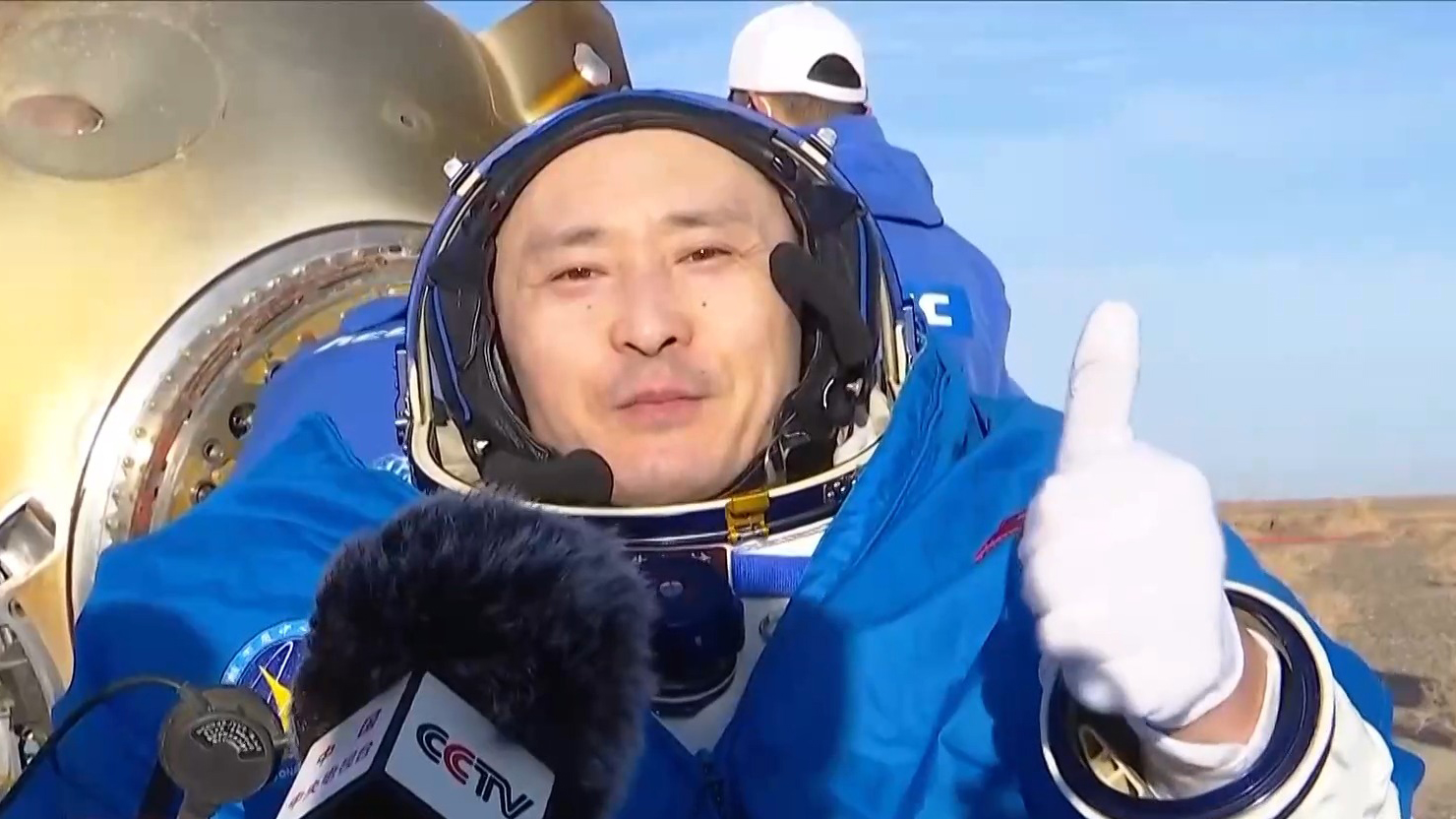
"It felt great coming back home," said Zhu, the country's first flight engineer in space, who exited the capsule second, adding that he's looking forward to returning to the China Space Station in the future.
02:02
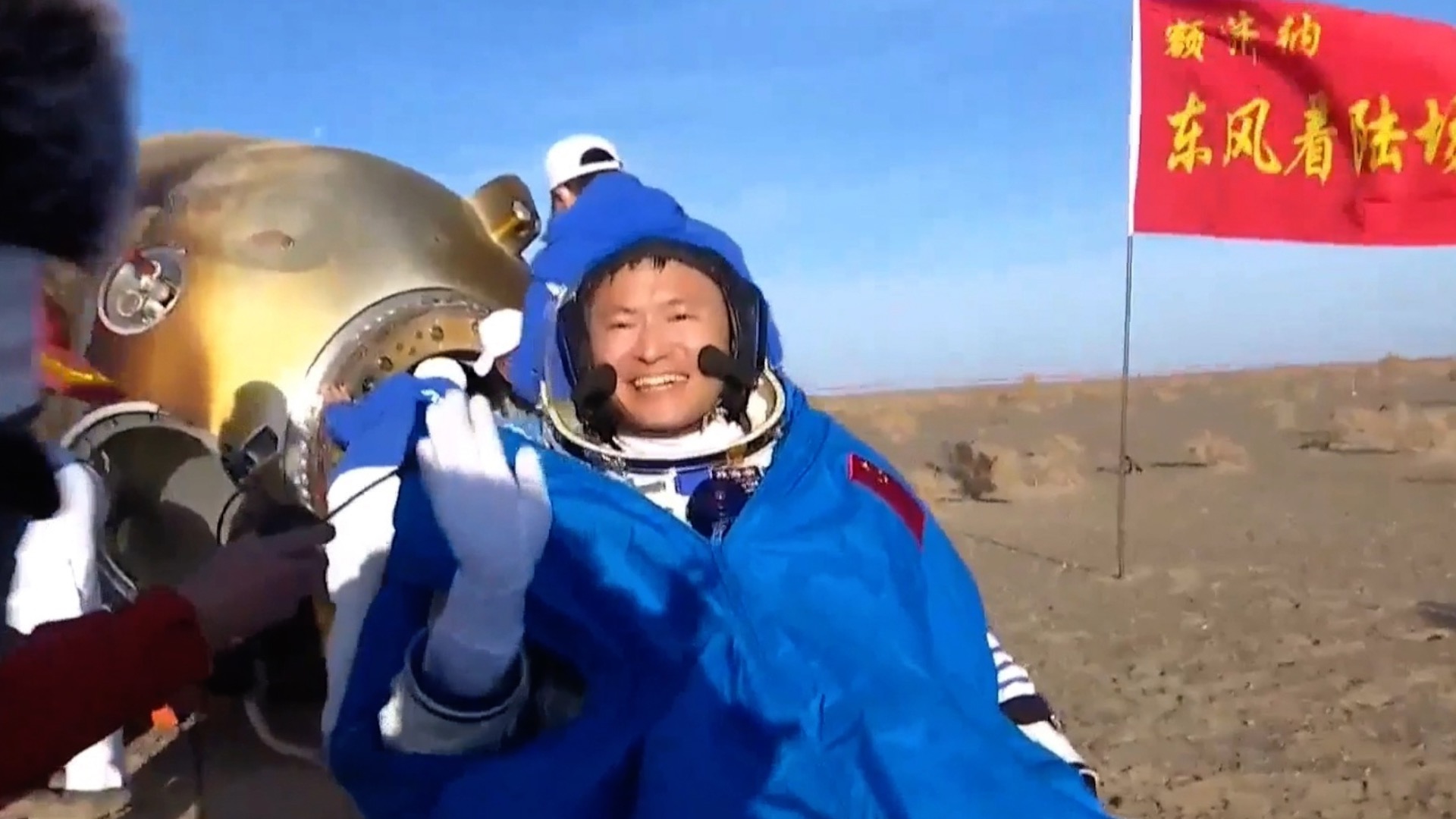
Gui, the first civilian taikonaut, also expressed a wish for another "business trip" to the space station.
"Every single day was full and wonderful at the China Space Station in the past five months," he said.
The completion of the Shenzhou-16 mission means that China's existing three types of taikonauts have completed flight assessment and practical tests, laying a good foundation for the subsequent development of the manned space program and large-scale space science experiments.
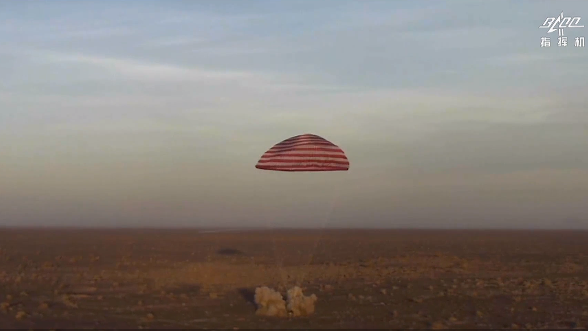
The re-entry capsule of China's Shenzhou-16 lands at the Dongfeng Landing Site in the Gobi Desert in north China's Inner Mongolia Autonomous Region, October 31, 2023. /CMG
The re-entry capsule of China's Shenzhou-16 lands at the Dongfeng Landing Site in the Gobi Desert in north China's Inner Mongolia Autonomous Region, October 31, 2023. /CMG
The Shenzhou-16 manned spacecraft separated from the country's space station combination on Monday night, after which the taikonauts took a high-definition panoramic image of the space station combination with Earth as the background – the first time such an image has ever been taken.
The Shenzhou-16 spaceship was launched on May 30 from the Jiuquan Satellite Launch Center.
During their five-month stay in the space station, the crew completed a series of tasks, including an extravehicular activity, the fourth science lecture "Tiangong Class" and multiple extravehicular installation tasks.
Closely cooperating with the ground crew, the taikonauts also carried out a slew of space science tests and experiments concerning human factors engineering, space medicine, life ecology, biotechnology, materials science, fluid physics and astronautical technology.
Significant progress has been achieved in the fields of space life science and human research, microgravity physics and new space technologies.